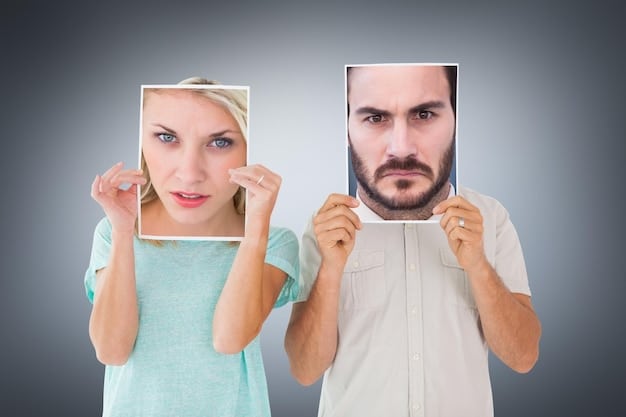The Last of Us Season 2: Adapting the Game’s Controversial Story? A Critical Review

‘The Last of Us’ Season 2 faces the daunting task of adapting one of gaming’s most divisive narratives, and this critical review explores how the show might handle the controversial storyline, comparing potential adaptations to the source material and examining their possible impact.
The arrival of ‘The Last of Us’ Season 2: Comparing the Show’s Adaptation to the Game’s Controversial Storyline – A Critical Review becomes a topic of intense debate among fans. The main question remains: will the television adaptation remain faithful to the game’s deeply divisive plot points, or will it choose a different path?
Adapting a Divisive Narrative: The Challenge of ‘The Last of Us’ Season 2
Adapting ‘The Last of Us Part II’ presents a unique challenge for HBO’s ‘The Last of Us’ series. The game, while critically acclaimed, sharply divided players with its narrative choices. Now, the showrunners must decide how closely to follow this contentious storyline.
Faithful Adaptation vs. Creative Divergence
One of the biggest decisions facing the show’s creators is whether to remain entirely faithful to the game’s plot or to diverge in significant ways. A faithful adaptation would likely include all the major events and character arcs from the game.
However, creative divergences could allow the show to address some of the criticisms leveled at the game, potentially making the story more palatable for a broader audience. This might involve altering character motivations, changing the pacing of events, or even introducing entirely new subplots.

- The risks of changing key events: Diverging too much could alienate fans of the game.
- The potential for improved pacing: Alterations might improve flow and narrative impact.
- Addressing criticisms: A chance to refine elements criticized in the game.
Ultimately, the path chosen will greatly impact the show’s reception and its place within ‘The Last of Us’ universe.
The Central Controversy: Exploring the Key Plot Points
At the heart of the controversy surrounding ‘The Last of Us Part II’ lies its narrative structure and character decisions. Understanding these elements is essential to predicting how the show might handle them.
The Death of Joel
Perhaps the most controversial aspect of the game is the death of Joel, a beloved character from the first game. His brutal and unexpected demise early in ‘The Last of Us Part II’ set the stage for the rest of the story.
The show faces the challenge of portraying this event in a way that is both impactful and respectful to the character. Softening the blow too much could diminish its emotional impact, while recreating it exactly could risk alienating viewers who are attached to Joel.
- Recreating the brutality: The impact of Joel’s death.
- Impact on Ellie’s character: The influence this event has on Ellie’s actions.
- How to respectfully handle his death: The challenge faced by the creators of the show to do this respectfully.
The way the show handles Joel’s death will likely be a defining moment for the season. It’s crucial for the show to deal with it respectfully, as the way they deal with it will have a massive impact on everything going forward.
Ellie’s Journey: Revenge and Its Consequences
Ellie’s journey in ‘The Last of Us Part II’ is one of revenge, driven by the need to avenge Joel’s death. This path leads her down a dark and violent road that forces her to confront the consequences of her actions.
Humanizing the “Enemy”
One of the game’s most controversial choices was to humanize Abby, the character responsible for Joel’s death. Players were forced to play as Abby, experiencing her perspective and learning about her motivations. This created a sense of empathy for a character who was initially presented as an antagonist.
The show must decide whether to follow this approach or to portray Abby as a more straightforward villain. Humanizing her could add depth and complexity to the story, but it could also risk further alienating viewers who are already resistant to her character.

- The risk of alienating viewers: Portraying Abby as a villain is the obvious move.
- Adding complexity and depth: Humanising Abby could further benefit the show.
The decision on whether or not to humanize Abby could have a massive effect on the viewers, and what the viewer takes away from the show.
Moral Ambiguity: Exploring the Gray Areas of Survival
The world of ‘The Last of Us’ is filled with moral ambiguity. Characters are forced to make difficult choices in order to survive, and there are no easy answers. The show has the opportunity to delve even deeper into these gray areas.
The Cycle of Violence
One of the central themes of ‘The Last of Us Part II’ is the cycle of violence. Ellie’s quest for revenge leads to more violence, which in turn creates more pain and suffering. The show can explore this theme by showing the far-reaching consequences of Ellie’s actions.
This could involve showing the impact of violence on innocent bystanders, or exploring the psychological toll it takes on the characters involved. By highlighting the destructive nature of violence, the show can offer a powerful message about the futility of revenge.
By highlighting this cycle of violence, and how it never truly solves the issues, it can send a powerful message to the audience.
Potential Changes: Softening the Blow or Doubling Down?
Given the controversial nature of ‘The Last of Us Part II’, there is speculation about whether the show will make changes to the story. Some believe that the showrunners will soften the blow by altering key events or character arcs.
Altering Character Motivations
One way to soften the blow would be to alter the motivations of the characters involved. For example, the show could explore Abby’s backstory in more detail, giving viewers a greater understanding of why she did what she did. This could make her actions more understandable, if not entirely forgivable.
Alternatively, the show could double down on the controversial elements of the story. This could involve portraying the violence in even more graphic detail, or further emphasizing the moral ambiguity of the characters’ choices. While this approach could be risky, it could also result in a more impactful and thought-provoking adaptation.
There are multiple approaches that could be taken when it comes to character motivations, highlighting the showrunners challenge in choosing the correct one.
Adapting the Gameplay: Challenges and Opportunities
Beyond the story, the show also faces the challenge of adapting the gameplay elements of ‘The Last of Us Part II’. The game is known for its intense combat sequences and its exploration of the environment.
Balancing Action and Narrative
The show needs to find a way to balance these elements without sacrificing the narrative. Including too much action could detract from the emotional weight of the story, while focusing too much on the narrative could make the show feel slow and uneventful.
- The viewers perspective: Too much action will take away from the weight of the narrative.
- How to balance the action: Finding ways to balance the intensity.
- The challenges faced: Successfully adapting the gameplay.
Striking the right balance will be crucial to creating a successful adaptation of ‘The Last of Us Part II’.
| Key Point | Brief Description |
|---|---|
| 🤔 Narrative Choices | Adapting ‘The Last of Us Part II’ presents a massive creative challenge. |
| 💀 The Death of Joel | The show must carefully handle his death to avoid alienating viewers. |
| 🏹 Ellie’s Revenge | Her journey involves moral decisions and difficult compromises. |
| ⚖️ Moral Ambiguity | Exploring difficult moral dilemmas with complex outcomes. |
frequently asked questions
What controversies does ‘The Last of Us Part II’ address?
▼
The game addresses subjects like revenge, cycles of violence, and empathy for antagonists through its narrative choices, which stirred debate among players.
Will Joel’s death be softened in the TV series?
▼
It’s unknown if showrunners will tone down the violence, but his death is a key event the show must handle sensitively due to its impact on the story.
How will Abby be portrayed in the show?
▼
It remains unclear whether Abby will be humanized or portrayed as a villain, impacting audience acceptance and understanding of her actions.
What are the moral dilemmas in the game?
▼
The game explores survival’s moral complexities, forcing characters to make tough choices without clear answers, heightening viewers’ engagement.
Will the TV show include much action?
▼
Finding the right balance will be key to keeping the series interesting while not detracting from the deep narrative.
Conclusion
In conclusion, the adaptation of ‘The Last of Us Part II’ for television presents a complex challenge. Showrunners must carefully balance faithfulness to the source material with the need to create a compelling and accessible viewing experience.
Read more content

![Unraveling [Topic Keyword]: Spoilers, Theories, and Fan Reactions Unraveling [Topic Keyword]: Spoilers, Theories, and Fan Reactions - Cover Image](https://spoilernew.com/wp-content/uploads/2025/06/spoilernew.com_31_1750193873_0fad1aaf_cover-360x180.jpg)
![Exploring [Topic]: Spoilers, Theories, and Predictions Exploring [Topic]: Spoilers, Theories, and Predictions - Cover Image](https://spoilernew.com/wp-content/uploads/2025/06/spoilernew.com_31_1750193099_cff22aee_cover-360x180.jpg)


